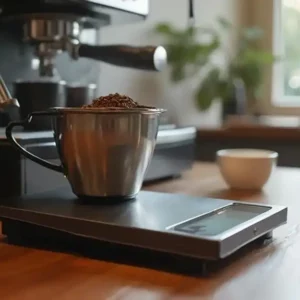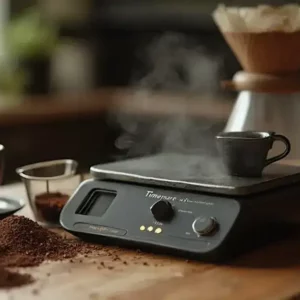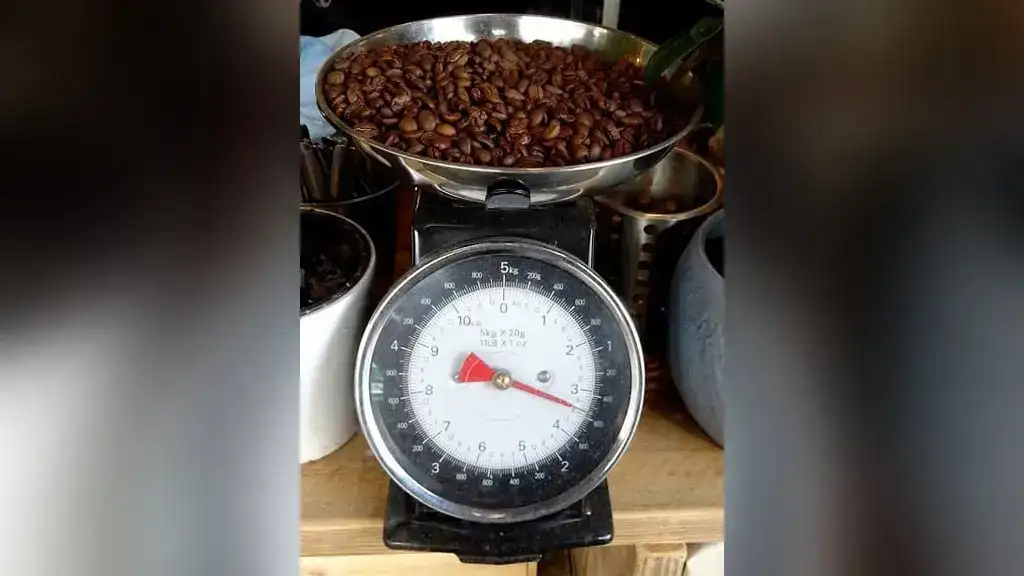Are you tired of relying on guesswork when brewing your coffee?
In the world of coffee brewing, precision and intuition collide in the debate between using a coffee scale or eyeballing the measurements. But which method truly reigns supreme?
This article will delve into the fundamentals of both the coffee scale and eyeballing methods, exploring their practical implications, method-specific considerations, and broader perspectives on measurement.
Prepare to unlock the secrets of brewing the perfect cup of joe.
Coffee Scale Vs. Eyeballing: Understanding the Fundamentals
[youtube]https://youtu.be/6t-M8BCse8c[/youtube]
To truly grasp the differences between the Coffee Scale and Eyeballing methods, let’s explore the intricate science behind brewing. By understanding how consistency in measurements affects extraction and flavor, we can better appreciate the precision offered by coffee scales.
Before diving deeper, get a clear understanding by decoding the weight units used in coffee. It’s a foundational step in mastering your brew.
However, it’s also important to acknowledge the origins and nuances of Eyeballing, as it’s deeply rooted in the tradition of intuitive brewing.
The Science of Brewing
When brewing coffee, understanding the mechanics of how consistency in measurements can affect extraction and flavor is crucial whether you use a coffee scale or rely on eyeballing.
Let’s delve into the science behind it.
One way to compare the extraction efficiency between coffee scale and eyeballing is by considering the ability of precise measurements and intuitive brewing to extract the optimal flavors from coffee grounds.
Using a coffee scale ensures that you consistently use the right amount of coffee, resulting in a more accurate extraction. On the other hand, relying on eyeballing measurements can lead to inconsistency, as it is challenging to achieve the same amount of coffee each time.
Grind size also plays a significant role in accuracy. Both methods allow for adjustments to achieve desired flavor profiles, but a coffee scale provides more precision.
Speaking of precision, ever pondered the differences between general kitchen scales and those specifically designed for coffee? Here’s a detailed comparison between coffee and kitchen scales that might enlighten your brewing journey.
Additionally, maintaining consistent water temperature is crucial for the brewing process, and measurements help ensure that temperature variations are minimized.
| Factors | Coffee Scale | Eyeballing |
|---|---|---|
| Extraction Efficiency | High | Low |
| Consistency Challenges | Low | High |
| Role of Grind Size | Accurate | Less Accurate |
Understanding the mechanics behind coffee scale and eyeballing will help you achieve the best brewing results.
Origins and Nuances of Eyeballing
You may wonder, but there are several origins and nuances to consider when it comes to the tradition of eyeballing in coffee brewing and the challenges that arise from this method compared to using a coffee scale.
The practice of eyeballing has deep roots in coffee culture, stemming from the days when precise measurements weren’t readily available. It became a tradition based on intuition and experience, allowing coffee makers to rely on their senses to achieve the desired brew.
For those who love to travel and maintain their brewing precision, having a reliable scale is essential. Explore these coffee scales designed for every travel destination and never compromise on your brew, no matter where you are.
However, there are challenges that come with eyeballing. Without the use of a coffee scale, it becomes difficult to achieve consistency in measurements, leading to variations in extraction and flavor. Additionally, the mechanics of intuition can be subjective, making it challenging to replicate a specific brew.
These practical implications have prompted the rise of the coffee scale as a more accurate and reliable method.
Despite this, the cultural significance of eyeballing remains, as it represents a connection to the traditional art of coffee brewing.
The Precision Afforded by Coffee Scales
Coffee scales provide the precision needed for repeatable brewing results, and they offer primary features that distinguish them from the method of eyeballing.
Modern brewing demands more than just weight precision. Dive into the world of coffee scales equipped with timers, a must-have feature for the contemporary brewer.
While we’ve touched on precision, there’s a myriad of other advantages to using coffee scales. Discover the full spectrum of benefits a coffee scale brings to your brewing routine.
Here are three reasons why coffee scales are advantageous in terms of precision:
- Accurate measurements: Coffee scales allow you to weigh the exact amount of coffee beans and water, ensuring consistency in every brew. This precision ensures that you achieve the desired strength and flavor profile with each cup.
- Consistency importance: Brewing coffee is a delicate process, and even slight variations in measurements can significantly impact the taste. By using a coffee scale, you can replicate your favorite brew consistently, eliminating the guesswork and ensuring that each cup is just as satisfying as the last.
- Method specific considerations: Different coffee brewing methods have specific requirements in terms of coffee-to-water ratios. Coffee scales make it easy to measure the right amount of coffee and water for each brewing method, whether it’s pour-over, French press, or espresso.
If precision intrigues you, perhaps you’re considering investing in a reliable scale. Dive into this curated list of the top scales designed specifically for coffee enthusiasts.
Practical Implications of Coffee Scale and Eyeballing:
[youtube]https://youtu.be/1veRmiR0L6g[/youtube]
When considering the practical implications of choosing between the Coffee Scale and Eyeballing methods, it’s important to first consider the consistency and predictability of your brew.
Using a Coffee Scale allows for precise measurements, ensuring that each cup of coffee is consistently brewed to your desired strength and taste. On the other hand, relying on Eyeballing introduces a level of variability, as it’s more difficult to accurately gauge the amount of coffee and water used.
Additionally, when it comes to speed, convenience, and the learning curve, using a Coffee Scale may require a bit more time and effort initially, but it offers a systematic approach that can be easily learned and replicated over time.
In contrast, Eyeballing may be quicker and more convenient, but it may take some trial and error to achieve the desired results consistently.
Accidents happen, especially when you’re brewing. To safeguard your investment, consider splash-proof and waterproof coffee scales. They ensure longevity even in the face of unexpected spills.
Regardless of your brewing method, maintaining your tools is paramount. Uncover these maintenance hacks tailored for coffee scales to ensure longevity and accuracy.
Coffee Scale Vs. Eyeballing: Consistency and Predictability
To ensure consistent and predictable brews, it’s essential to rely on a coffee scale rather than eyeballing. While eyeballing may seem convenient, it introduces a level of variability that can impact the taste and quality of your coffee.
Here’s why using a coffee scale is crucial:
- Consistency vs. Variability: Eyeballing relies on intuition, which can vary from person to person. In contrast, a coffee scale provides precise measurements, ensuring consistency in every brew.
- Precision vs. Intuition: Measuring techniques used with a coffee scale allow for precise control over the amount of coffee and water used. Eyeballing, on the other hand, leaves room for error and imprecise measurements.
- Brewing Control and Flavor Extraction: With a coffee scale, you can easily replicate a recipe and adjust variables to achieve the desired flavor. Eyeballing may result in under or over-extraction, leading to inconsistent flavor profiles.
If you’re leaning towards a coffee scale, it’s essential to know what features to look for. Here’s a checklist highlighting must-have coffee scale features to guide your purchase.
Speed, Convenience, and Learning Curves
You may be wondering about the speed, convenience, and learning curves associated with using a coffee scale versus eyeballing when it comes to brewing your daily cup of coffee.
Let’s start by comparing the speed and accuracy of these two methods. Eyeballing, as an intuitive brewing process, allows for a quicker brewing experience since you don’t need to measure out the coffee and water precisely.
On the other hand, using a coffee scale for scale-based brewing might take a bit more time, but it provides a higher level of accuracy in terms of the coffee-to-water ratio.
When it comes to the learning curve, eyeballing is often seen as more accessible for beginners since it doesn’t require any additional equipment. However, mastering the art of eyeballing can take time and practice to achieve consistent results.
On the contrary, using a coffee scale has a steeper learning curve initially, but once you become familiar with the measurements and ratios, it becomes easier to replicate your preferred coffee flavor consistently.
The benefits of scale-based brewing are significant. By using a coffee scale, you can achieve precise measurements, ensuring a consistent brew every time. This level of accuracy allows you to experiment with different brewing variables and understand their impact on the final cup of coffee.
Additionally, scale-based brewing helps you optimize the coffee-to-water ratio, resulting in a more balanced and flavorful cup of coffee.
In terms of the impact on coffee flavor, both methods can produce delicious coffee when executed correctly.
However, using a coffee scale gives you more control over the brewing process, allowing you to fine-tune the variables and extract the desired flavors from your coffee beans.
Eyeballing, while convenient, may lead to inconsistencies in the coffee-to-water ratio, which can affect the taste and overall quality of your brew.
Coffee Scale Vs. Eyeballing: Method-Specific Considerations
When it comes to assessing the accuracy of coffee brewing methods, it’s important to consider the effectiveness of eyeballing versus coffee scaling across various techniques.
Different brewing methods may favor precision or intuition, and understanding these nuances can greatly impact the final taste of your coffee.
Additionally, minute changes in measurements can have profound impacts on the flavor profile, making it crucial to analyze and adjust accordingly.
Coffee Scale Vs. Eyeballing: Accuracy Across Brewing Techniques
Using a coffee scale instead of eyeballing measurements significantly improves the accuracy of your brewing across various methods. Here’s why:
- Consistency benefits: When using a scale, you can ensure that you’re using the same amount of coffee and water each time, leading to consistent flavor profiles in your brews. Eyeballing, on the other hand, can result in inconsistency and variations in taste.
- Intuitive brewing challenges: Eyeballing relies on intuition, which can be subjective and inconsistent. By using a scale, you eliminate the guesswork and have precise control over the brewing process, allowing you to replicate your preferred taste consistently.
- Measurement precision: Coffee scaling provides precise measurements in grams, ensuring accuracy in the coffee-to-water ratio. This precision is crucial for achieving optimal extraction and flavor balance.
Coffee Scale Vs. Eyeballing: Taste Profiles and Adjustments
By analyzing the taste profiles and making adjustments, you can understand how minute changes in measurements through coffee scaling versus eyeballing can have profound impacts on the resulting flavor of your coffee.
Taste adjustments are crucial in achieving the desired flavor profile, and measurement precision plays a key role in this process.
When using a coffee scale, you can accurately measure the amount of coffee and water, ensuring consistency in every brew. This precision allows you to fine-tune your brewing mechanics and experiment with different ratios to achieve the desired taste.
On the other hand, eyeballing may present intuitive brewing challenges as it relies on estimations. While it may work for experienced brewers, it can lead to inconsistent and unpredictable results.
Using a coffee scale provides the necessary precision for repeatable results and allows you to make informed adjustments for a consistently delicious cup of coffee.
Coffee Scale Vs. Eyeballing: Broader Perspectives on Measurement
When considering the broader perspectives on coffee measurement techniques, it’s important to explore the cultural and traditional lenses through which both precise measurement with a coffee scale and intuitive measurement through eyeballing are viewed.
Understanding the historical roots and cultural significance of these methods can shed light on why they’re still practiced today.
Additionally, evaluating the economic and environmental concerns associated with using a coffee scale versus relying on intuition can provide insights into the cost-effectiveness and sustainability implications of these measurement techniques.
Cultural and Traditional Lenses
You can gain a deeper understanding of the cultural and historical significance of both precise and intuitive coffee brewing by examining the roots of coffee scale and eyeballing techniques.
Cultural Significance:
- Coffee brewing methods have been passed down through generations, carrying cultural traditions and rituals.
- Different cultures have unique ways of brewing coffee, reflecting their values and practices.
- Coffee ceremonies, such as the Ethiopian coffee ceremony, hold great cultural importance as social events.
While digital scales are the rage, there’s a timeless charm to the classics. Discover the world of analog coffee scales that bring a touch of tradition to modern brewing.
Historical Roots:
- Coffee has a long history, dating back centuries, with brewing methods evolving over time.
- Traditional brewing methods were born out of necessity, adapting to available resources and tools.
- As coffee spread globally, each region developed its own brewing style, influenced by local customs and preferences.
Intuitive Brewing Challenges:
- Eyeballing techniques require experience and skill to achieve consistent results.
- It can be challenging to replicate the same taste profile with intuitive brewing methods, leading to variations in flavor.
Understanding the cultural and historical context behind coffee brewing techniques helps us appreciate the rich tapestry of coffee culture worldwide.
Economic and Environmental Concerns
To truly understand the economic and environmental concerns surrounding coffee measurement techniques, you must evaluate the cost-effectiveness and sustainability implications of both the coffee scale and eyeballing methods.
When it comes to cost effectiveness, using a coffee scale can provide more accurate measurements, ensuring that you use just the right amount of coffee grounds for each brew.
This can help reduce waste and save money in the long run. Additionally, by using a scale, you can better control the consistency of your coffee, resulting in a more enjoyable and satisfying cup.
On the other hand, eyeballing relies on intuition and experience, which may lead to inconsistent measurements and potentially wasted coffee.
In terms of sustainability implications, using a coffee scale can help minimize environmental impact by reducing coffee wastage and ensuring optimal usage of resources. Eyeballing, on the other hand, may result in overuse of coffee grounds, leading to unnecessary waste.
Coffee Scale Vs. Eyeballing: The Evolution of Brewing
As you explore the evolution of coffee brewing, it’s important to consider the role of experience and expertise in choosing between the coffee scale and eyeballing methods.
While we discuss brewing evolution, it’s pivotal to recognize the variety of tools that have emerged. Dive into the different types of coffee scales available today, each tailored for specific brewing needs.
Many traditional brewers rely on their own intuition and knowledge gained over years of brewing, while others embrace the precision and consistency offered by modern technological advancements, such as smart scales.
The progression from traditional practices to modern techniques reflects the desire for greater control and accuracy in brewing, highlighting the ongoing pursuit of the perfect cup of coffee.
The Role of Experience and Expertise
When it comes to brewing coffee, experience and expertise play a crucial role in determining whether one chooses to rely on a coffee scale or simply eyeball the measurements. Your knowledge and familiarity with the process can greatly influence your decision.
Here are three key factors to consider when deciding which method to use:
- Influence of experience: Over time, you develop a sense of intuition that allows you to gauge the right measurements without relying on a scale. This intuition comes from years of practice and a deep understanding of the brewing process.
- Brewing method considerations: Different brewing methods require different levels of precision. Some methods, like pour-over, demand more precise measurements to achieve the desired flavor profile, while others, like French press, allow for more flexibility.
- Flavor adjustments: Experienced brewers understand how to make flavor adjustments based on personal preference. They can make small tweaks to the measurements to achieve the perfect balance of flavors, resulting in a cup of coffee that suits their individual taste.
Ultimately, the choice between using a coffee scale or eyeballing the measurements depends on your level of expertise and the brewing method you prefer. Both approaches have their merits, but experience and intuition can often lead to exceptional results.
Technological Advancements in Brewing
You can enhance your brewing experience by embracing the technological advancements in coffee brewing, specifically by incorporating smart scales to ensure precise measurements.
Embracing technology is just the first step. To truly elevate your brewing game, it’s essential to master the use of your coffee scale. From calibration to advanced features, become a pro in no time.
Smart scales offer numerous benefits that can greatly improve your brewing process. Firstly, they provide accurate and consistent measurements, eliminating the guesswork associated with eyeballing. This ensures that each cup of coffee you brew is consistent and of high quality.
Embracing the future means leveraging the best of technology. Get acquainted with digital coffee scales, epitomizing modern precision in brewing.
Additionally, smart scales offer intuitive features that make brewing coffee easier and more efficient. They can guide you through the brewing process, providing step-by-step instructions and real-time feedback. This not only saves time but also helps you achieve repeatable results every time you brew.
The day-to-day implications of using smart scales are significant, as they simplify the brewing process and allow you to focus on other aspects of coffee preparation. In contrast, eyeballing can lead to variability in measurements, resulting in inconsistent flavor profiles and a less satisfying brewing experience.
Conclusion
In conclusion, after delving into the deep and nuanced world of coffee brewing methods, it becomes clear that the choice between using a coffee scale or eyeballing isn’t just a matter of precision or intuition.
It’s a reflection of our broader perspectives on measurement, our cultural values, and our evolving understanding of coffee brewing.
So, the next time you reach for your coffee scale or rely on your instincts, remember that behind that simple choice lies a complex web of history, culture, and personal preference.
Cheers to the art and science of coffee!


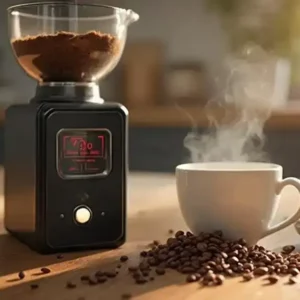
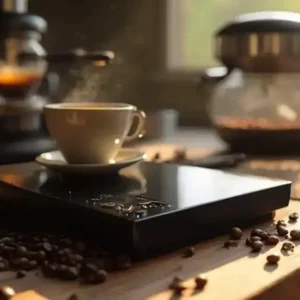
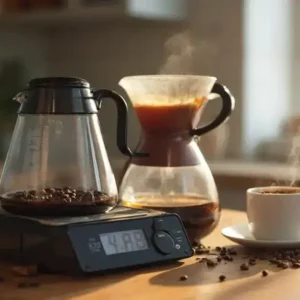
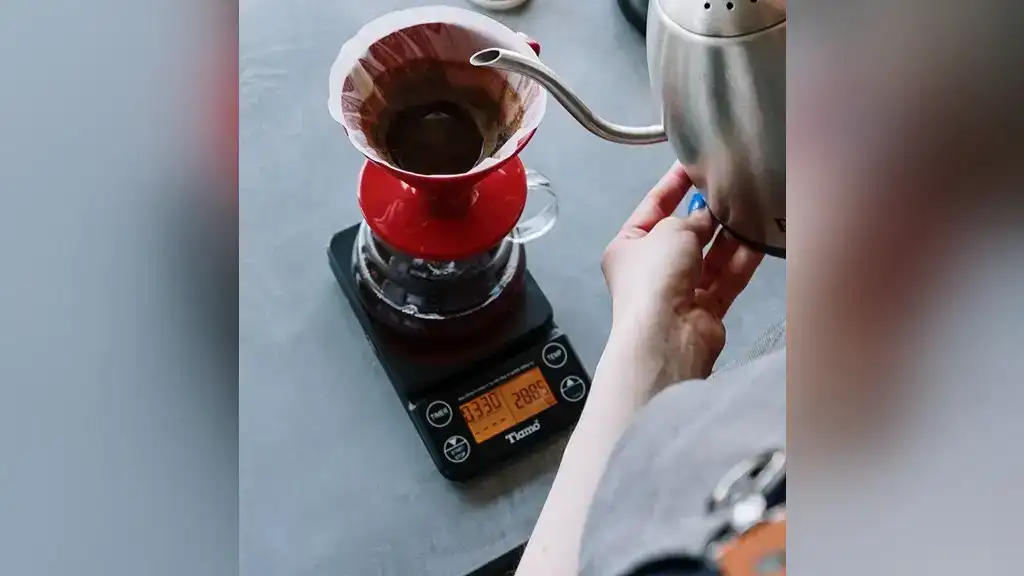
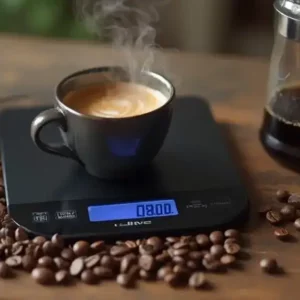




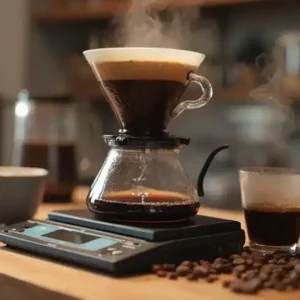

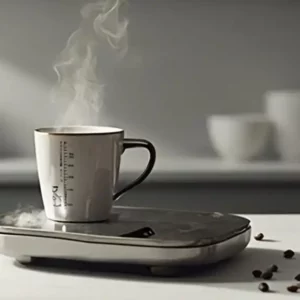
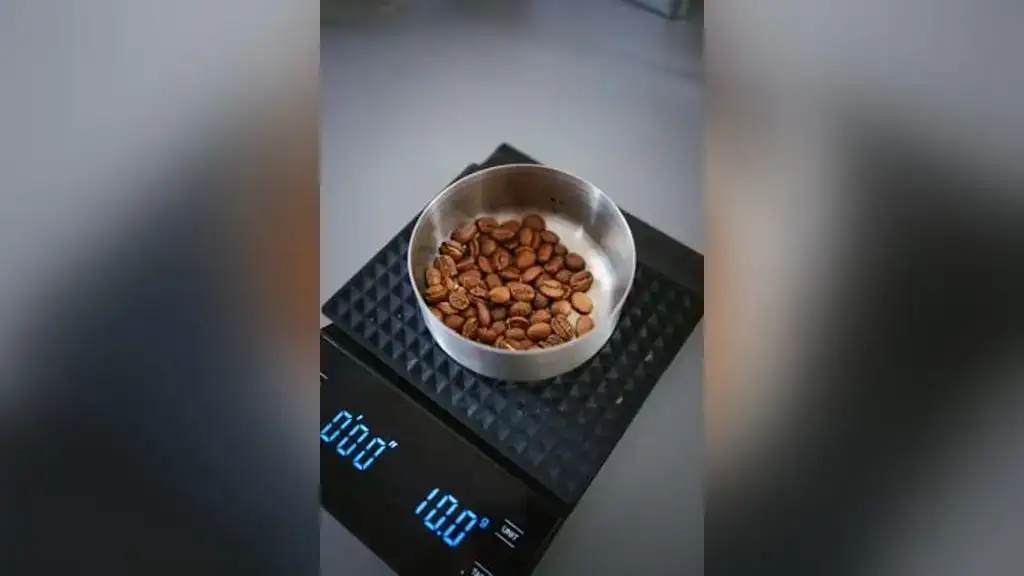

![Best Coffee Scales ([year]) You Shouldn't Miss! Best-Coffee-Scales-You-Shouldnt-Miss-1](https://coffeescan.com/wp-content/uploads/Best-Coffee-Scales-You-Shouldnt-Miss-1.webp)
